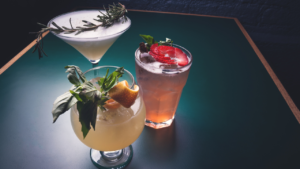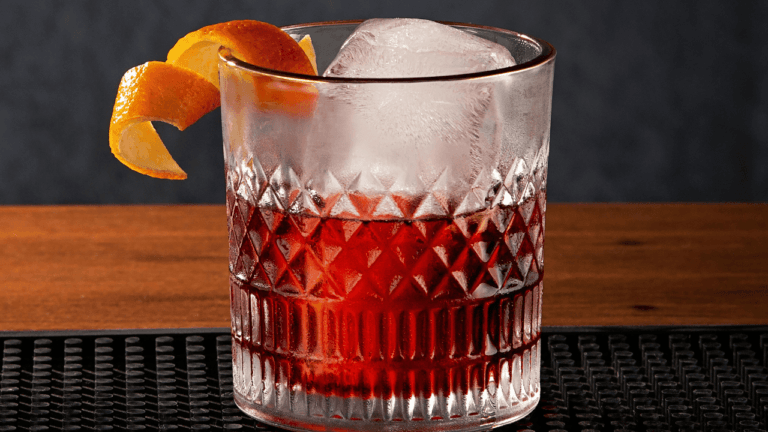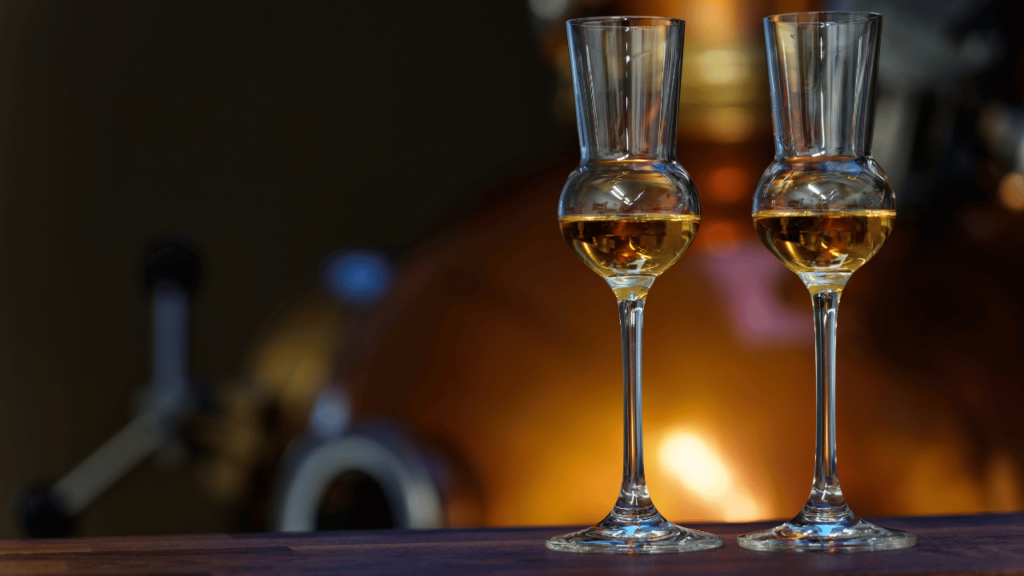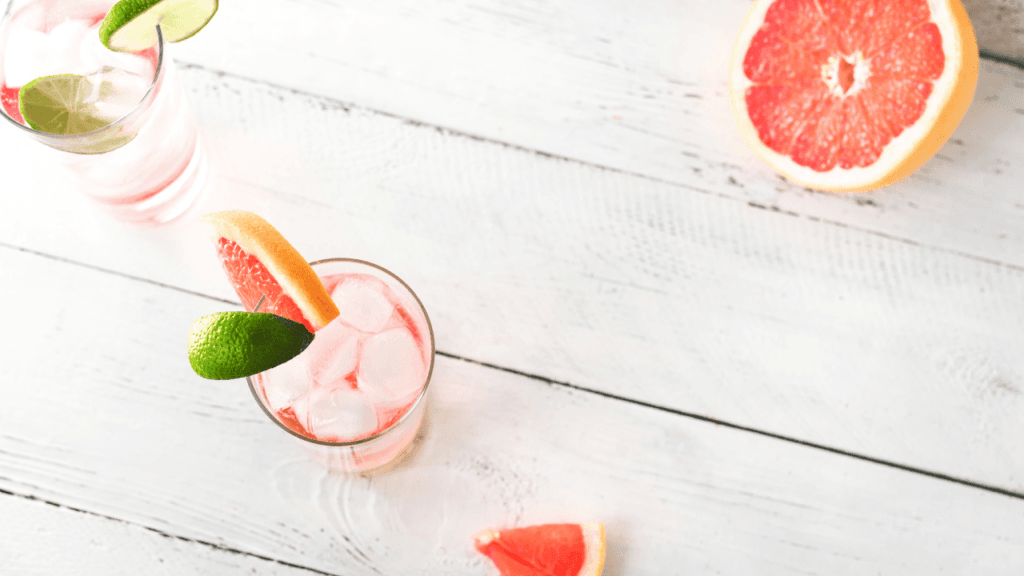Cocktail and Mixology Whiskey Morgan is a top mixologist with more than 15 years in the business. In his praised book, “Mastering Mixology: Crafting The Perfect Classic Cocktails for Home Bartenders,” he shares the secrets. This book makes the cocktail journey fun and educational, covering the history of drinks. Whiskey Morgan’s goal is to guide everyone from beginners to pros in making great classic drinks and modern twists.
The guide talks about must-have tools, ingredients, and tips to shine in mixology. It offers 136 pages of deep knowledge and 50 different recipes with spirits like vodka, gin, whiskey, and rum. “Mastering Mixology” is loved by many, with a top score of 4.7 stars out of 5 from 47 readers. This shows how crucial it is in the world of cocktail making.
Key Takeaways
- Whiskey Morgan has over 15 years of experience in the Cocktail and Mixology industry.
- His book, “Mastering Mixology,” contains 50 cocktail recipes using various spirits.
- The book is 136 pages long and highly rated at 4.7 out of 5 stars by 47 reviewers.
- Essential tools, ingredients, and techniques for mastering mixology are covered in the guide.
- Comprehensive knowledge prepares readers to craft both classic and innovative cocktails.
History and Evolution of Cocktails
Cocktails have a history dating to the late 18th century. They started as simple drinks and turned into complex beverages. Various events and cultural changes have influenced cocktails through time. This journey portrays the cocktail history, including key moments in mixology.
The Birth of the Cocktail
The word “cocktail” first appeared on March 17, 1798, in a British newspaper. It marked the start of these drinks. Americans embraced the term after it was used in an 1803 joke editorial in the Farmer’s Cabinet. Early cocktails were a mix of alcohol, sugar, water, and bitters. Jerry Thomas’s book during the Golden Age of Cocktails was a game-changer for bartenders. It set the stage for the cocktail’s growth.
Prohibition Era Cocktails
In 1920, the National Prohibition Act shook the cocktail world. This led to the creation of prohibition cocktails. They hid the taste of bad-quality alcohol. Speakeasies were secret places where bartenders could innovate. This era added many recipes to cocktail history that are still loved today.
Modern Cocktail Renaissance
The late 20th century marked a rebirth in cocktail interest. This mixology renaissance saw Dale Degroff reviving old, classic cocktails in the 90s. It brought back the importance of history in cocktails. The tiki culture, led by Don the Beachcomber and Trader Vic, also gained attention. It brought an exotic feel to cocktails. The craft cocktail movement has since flourished, focusing on intricate recipes and the creativity of mixology. It celebrates cocktail-making as an art.
| Milestone | Event | Date |
|---|---|---|
| The Birth of the Cocktail | First reference in a British newspaper | March 17, 1798 |
| Spoof Editorial | First appearance in the Farmers’ Cabinet | 1803 |
| Golden Age Milestone | Publication of Jerry Thomas’s recipe book | 19th Century |
| Prohibition Impact | National Prohibition Act (Volstead Act) | 1920 |
| Tiki Culture Rise | Popularity of tiki drinks | Mid-20th Century |
| Classic Revival | Classic cocktails revival by Dale Degroff | 1990s |
| Modern Renaissance | Emergence of craft cocktail movement | Late 20th Century |
Essential Bar Tools and Equipment
Great cocktails need great tools. The perfect arsenal includes shakers, jiggers, strainers, and muddlers. These tools are the key to making every drink just right.
Must-Have Bar Tools
Boston shakers are a pro’s choice because of their two-piece setup. They’re great for mixing two drinks together at once. You should also have a jigger for precise measuring.
A mixing glass and a long bar spoon are must-haves. They’re perfect for when you want to stir your cocktails. And an 11 to 12-inch muddler helps get the most flavor out of your ingredients.
A hand press is handy for getting fresh juice. With these tools, you’ll be ready to mix amazing cocktails.
For more detailed advice on bar tools, visit this article.
Specialized Glassware
The right glass makes the drink. There are tall, short, stemmed, and shot glasses. Each enhances cocktails in its own way, making drinks look and taste better.
| Glassware Type | Use Case |
|---|---|
| Tall Glasses | Ideal for highballs and long drinks |
| Short Glasses | Perfect for spirits and cocktails served neat or on the rocks |
| Stemmed Glasses | Best for cocktails served straight up, like martinis |
| Shot Glasses | Used for serving spirits or liqueurs in small volumes |
Get the right barware and glassware for great cocktails. They make mixing and enjoying drinks much better.
Understanding Cocktail Ingredients
Learning mixology means knowing all main *cocktail ingredients*. It’s key to know how each part makes a drink special. Let’s dive into what makes amazing cocktails.
Base Spirits
The heart of any cocktail is its *base spirits*. These give the drink its main flavor. You’ll often find these base spirits:
- Vodka – Has a pure, neutral taste. It’s famous in many mixed drinks.
- Gin – Has a strong juniper taste. It makes cocktails more interesting with its scent.
- Whiskey – Comes in many types, from sweet to smoky. It adds deep flavors to drinks.
- Rum – Has a base of either sweet molasses or cane sugar. It’s a must for tropical drinks.
Modifiers and Mixers
*Modifiers* and mixers are vital for enhancing the *base spirits*. They bring out the best in drinks. Common ones include:
- Vermouth – A strong wine that makes cocktails rich, like martinis.
- Bitters – Strong flavor extracts that add depth and a bit of bitterness. Use them carefully.
- Syrups and Cordials – Add sweetness and more flavors to your drink.
Using these ingredients well can totally change a cocktail. It makes the taste and feel better.
Garnishes and Aromatics
*Garnishes* and aromas are more than just pretty. They make the drink smell good, look good, and taste better. Here are a few favorites:
- Citrus Peels – Twisted or heated to release oils. This makes the drink both smell and taste better.
- Berries – Whether fresh or mashed, they add color and flavor.
- Aromatic Bitters – Sprayed on top for a scented surprise when you take the first sip.
Focusing on these details lets mixologists craft memorable cocktails. They’re not just great to drink; they’re a whole experience that celebrates mixology.
The Art of Balancing Flavors
To create a great cocktail, you must expertly blend flavors. This mixing is like putting together puzzle pieces. You mix sweetness, acidity, bitterness, and smells right. This makes the drink a joy for your taste buds.
Sweetness and Acidity
Sweet and sour cocktails dance between two main tastes. Sweetness often comes from syrups, fruit liqueurs, or some spirits. Add sour with a squeeze of lemon or lime. The sweet spot is usually a 2:1:1 mix of liquor, sour, and sweet stuff. Don’t forget to taste along the way. Adjust until it’s just right.
Bitterness and Aromatic Elements
Bitter flavors and nice smells take cocktails to the next level. Bitters, like those in amaros, can balance out too much sweetness. They make drinks more interesting. Herbs and scent kick the complexity up a notch. For instance, Biggar Strength Gin shows how important special plants are. They give the gin its amazing smell, perfect for cocktails.
Getting things right takes practice and trying new things. Knowing how heat and dilution change tastes will make you a master mixer. Shaking adds air and water, which is good for citrusy drinks. Stirring keeps strong, spirit-focused drinks clear and crisp, such as the classic Martini.
Mixing Techniques for Perfect Cocktail and Mixology
Perfecting a cocktail means mastering various mixing methods. These include shaking, stirring, and muddling. Each method is essential for getting the right taste, texture, and look of your drink. Knowing these techniques well will make you a better mixologist.
Shaking vs. Stirring
Shaking a cocktail is about mixing the ingredients vigorously for 10-12 seconds. This method is ideal when your drink has citrus or dairy in it. Shaking creates a well-blended, frothy drink. It’s great for cocktails like margaritas or daiquiris.
Stirring, in contrast, is a more subtle move, great for drinks focused on the spirit. It involves gently mixing the drink for 20-30 seconds. This technique keeps the drink clear, smooth, and highlights the spirit’s own taste. It works well for drinks like martinis or negronis.
Muddling and Infusions
Muddling is key for getting flavors from herbs, fruits, or other items. By gently pressing and twisting them with a muddler, you can draw out their essences. Just be careful not to mash them into a pulp. For drinks with muddled items, using a fine strainer helps keep the drink clear.
Infusions add a creative twist to cocktails. They involve letting spirits sit with fruits, spices, or herbs to pick up new flavors. This method breathes fresh life into old cocktail favorites, introducing new tastes while keeping the drink well-balanced.
Cocktail and Mixology Basics
Knowing the basics of making cocktails is key for both new fans and skilled bartenders. You start by learning classic cocktails and then move on to new mixology ideas. This includes many techniques and skills.
Classic Cocktail Recipes
The history of mixology is in the classic cocktails we love. Drinks like the Martini, Old Fashioned, and Negroni are classic for a reason. Making them well involves learning key cocktail skills and how to balance flavors.
They are a great way to get into mixology. Because they teach important lessons and are loved by many.
Modern Cocktail Creations
Modern cocktails are all about new ideas and flavors. Bartenders today are taking mixology to a whole new level. They use unique methods and the best ingredients to create fresh drinks. To get good at this, try new flavor combinations and learn to use tools like shakers and strainers. Going to mixology events is also very helpful.
This mix of old and new is what makes being a mixologist so exciting.
Creating a Signature Cocktail
Making a Signature Cocktail lets you show off your style and originality. It marks your place in the world of drinks. Those who make cocktails, called mixologists, are like top chefs. They mix sweet, sour, and bitter flavors to create perfect drinks.
To make your own amazing drink, you need the right tools. Get a cocktail shaker, a jigger, a muddler, and a bar spoon. Mixing high-quality alcohol with fresh homemade flavors gives you a drink to remember.
A great Signature Cocktail stands out with its unique taste and look. It’s easy to make, feels special, and looks beautiful. The colors, garnishes, and glassware make it a work of art.
People love drinks that match their own tastes and the occasion. So, it’s important to offer choices that can be personalized. Don’t forget about making non-alcoholic drinks, or mocktails, too.
Learning from experts in mixology can really boost your skills. Mixology classes, following top mixologists online, and reading blogs help you stay on trend. It’s all about innovation and new drink ideas.
Garnishing your drink is also really important. Adding the right garnish can turn a good cocktail into a great one. It’s the finishing detail that people remember.
Presentation and Garnishing Tips
Cocktail presentation matters a lot. It’s not just about how it looks; it changes how we enjoy the drink. Choosing the right garnish, whether it’s a piece of fruit, a leaf, or a flower, is like an art. It makes the drink look better and adds to its smell and taste. These elements highlight the drink’s beauty.
Fruit slices, herbs, and even flowers do more than just look pretty. They also make the drink taste and smell better. This makes the cocktail more interesting. For example, adding a lemon slice or cherries makes the drink look and taste better. Mint and rosemary add flavor and look good, too.
Using flowers in drinks has become very popular. They look beautiful and smell nice. This takes the cocktail to a whole new level, making it a great experience. And, things like a twist of citrus fruit can change how the drink tastes. It adds a fresh, tangy flavor that can work well with the other tastes.
Marketing knows that how a drink looks is very important. A good-looking drink catches people’s eyes. It makes you want to try it before you even taste it. The glass, the liquid inside, and the garnish have to match well. This makes the drink stand out, even without anyone taking a sip.
In the end, what we put on top of our drinks means a lot. It’s about skill and creativity. This is what makes a cocktail not just a drink, but an experience to enjoy.
Setting Up Your Home Bar
A great home bar needs the right spirits, essential mixers, and a neat arrangement. When done well, it stands out at any event. This includes small gatherings and big parties with 75 to 100 guests.
Choosing the Right Spirits
Key to a good home bar is selecting a variety of spirits. Make sure you have vodka, gin, rum, tequila, and whiskey. Add vermouths, bitters, and fruit liqueurs for more cocktail choices. This ensures every guest finds a drink they like.
Stocking Essential Mixers
Mixers are vital for a wide drink selection. Always have fresh juices and a supply of tonic and soda. Keep syrups and tonic water stocked. And, remember to refresh the ice during parties. Use different ice shapes to make drinks look and taste better.
Organizing Your Bar Space
Having a well-organized bar space is key for quick drink preparation. Choose versatile glasses and have plenty. Add garnishes and serving napkins for a complete look. This shows your guests you care about their experience.
| Element | Recommendation |
|---|---|
| Glassware | Inexpensive straight-sided glasses |
| Ice Cubes | Big square ones, large spheres, shaved ice |
| Garnishes | Citrus slices, twists, olives, cherries |
| Cocktail Napkins | Paper for large gatherings, linen for smaller events |
Also, add swizzle sticks and keep bar cloths nearby for convenience. Using scarves to wrap wine bottles adds a fancy touch. By focusing on setup, you make your guests feel welcomed and special.
Setting up your bar carefully ensures you can easily make and serve drinks. Enjoy the process of creating cocktails for your guests.
Conclusion
Cocktail and Mixology The path to becoming a cocktail pro mixes history with creativity and skill. Learning to make cocktails not only boosts your own know-how but also makes you a sharer of amazing experiences. Places like The Deck at Island Gardens show us that staying open to new ideas is key.
At The Deck, Sarah Jones and her team show that mixing drinks isn’t just pouring them. They mix old ways with new tastes to make every sip a story. They prove that being a master in cocktails means being a master of crafting moments.
There’s a lot to learn on the way to becoming a cocktail wizard. This includes learning to balance different flavors, and trying out new things like molecular mixology. Understanding flavors and how they work together, plus the art of presenting a drink, changes you from a beginner to an expert. So, the more we learn, the more we see mixing drinks as a true art form.

























